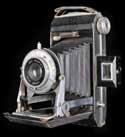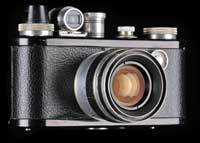Alistair Scott – biography
|
Alistair Scott took up photography at the age of 9 when he was given an old Agfa ‘Billy’ camera that no one else in the family wanted. It used 120 roll film – remember that stuff? – and had a waist-level viewfinder that could be tilted from side to side, depending on whether you wanted landscape or portrait format. He was thrilled, and the gift led to a lifetime fascination with photography. Unfortunately, he left the camera on a wall in Wales (on the A470 at the entrance to the Fairy Falls, near Bettws-y-Coed, if you’re passing and want to look for it). Devastated, but bitten by the photography bug he saved up all his pocket money and bought an Exa 1a – an early single-lens reflex. This machine had the mirror and shutter incorporated in one unit, rather like one of those old-style bread bins with a semicircular lid. This meant that after taking a shot, you couldn’t see anything through the lens until you’d cocked the shutter again. The viewfinder also showed a mirror image of the scene, and the shutter speeds ranged from 1/30th to 1/175th second, all of which could be a bit disconcerting if you were trying to photograph a fast-moving object.
Having graduated from college as a teacher of Agricultural Science Alistair went to work in Zambia, teaching in a state school. That was in 1970, only 6 years after the country’s independence, and Zambia had a desperate need for teachers. He soon discovered the amazing wealth of wildlife in the country … and also discovered he was going to need a more versatile camera if he was to get any decent photographs of it. So, he spent his first pay rise on a Nikkormat, and has been with Nikon cameras ever since. His initial 3-years in Zambia became 6 years, 6 years became 9, and he eventually lived there for 20 years. During that time he moved on from teaching to running the Wildlife Conservation Society of Zambia and then to working as a trail leader in the Luangwa Valley National Park. He also acquired more sophisticated Nikons, with lenses, and amassed a wealth of images of the country, its people and wildlife. He was then offered a job in Swizerland, with the World Wide Fund for Nature (WWF), managing environmental education projects in Africa. In the mid 1990s he and WWF parted company, and Alistair moved into more creative fields — writing and photography — which is where he is now. He is still with Nikon, and now photographs with a Nikon D3 or, if that gets too heavy to lug around, a Canon G1x. He is also fascinated by pinhole photography and in experimenting, has turned various digital cameras into pinhole ones. In addition to his photography, Alistair also writes. His latest book is The Greatest Guide to Photography , and is a non-technical fully-illustrated guide to all aspects of the art. It is available from Amazon UK and through all good bookshops. |

 From there he graduated to a Corfield Periflex (which he still has), a British-made camera that accepted Leica lenses and had a strange little reverse periscope that could be lowered into the film chamber in order to focus through the lens. It was a sort of semi SLR: a unique piece of equipment. Again, it was a great camera for static subjects. But, given the awkwardness of focussing, not best suited for action shots.
From there he graduated to a Corfield Periflex (which he still has), a British-made camera that accepted Leica lenses and had a strange little reverse periscope that could be lowered into the film chamber in order to focus through the lens. It was a sort of semi SLR: a unique piece of equipment. Again, it was a great camera for static subjects. But, given the awkwardness of focussing, not best suited for action shots.